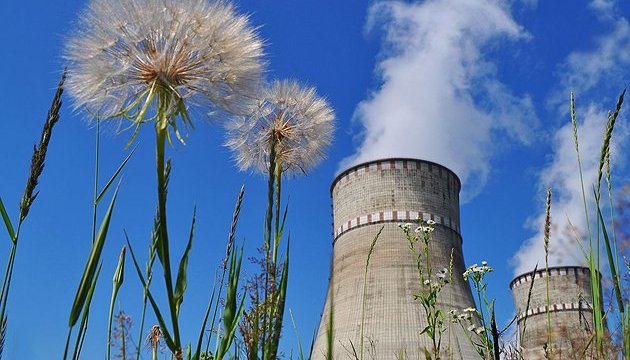УДК 70.25.09 : 621.039.75 • Issue 4 (32) / 2020 • 77-85 pages
Zabulonov Y., Kadoshnikov V., Melnychenko T., Zadvernyuk H., Kuzenko S., Puhach O.
Zabulonov Y.L., Corresponding Member of the National Academy of Sciences of Ukraine, D. Sc. (Tech.), Professor, Director, State Institution “The Institute of Environmental Geochemistry of National Academy of Sciences of Ukraine”, Zabulonov@igns.gov.ua, ORCID: 0000-0001-8239-8654
Kadoshnikov V.M., Research Scientist State Institution “The Institute of Environmental Geochemistry of National Academy of Sciences of Ukraine”, IGNS_Kadoshnikov@igns.gov.ua ORCID: 0000-0001-8707-873X
Melnychenko T.I., Ph.D. in Biology, Senior Research Scientist, State Institution “The Institute of Environmental Geochemistry of National Academy of Sciences of Ukraine”, tim–@ukr.net, ORCID: 0000-0003-2349-5395
Zadvernyuk H.P., Ph.D. in Geology, Senior Research Scientist, State Institution “The Institute of Environmental Geochemistry of National Academy of Sciences of Ukraine”, IGNS_Zadverniuk@igns.gov.ua, ORCID: 0000-0001-6425-9845
Kuzenko S.V., Research Scientist, State Institution “The Institute of Environmental Geochemistry of National Academy of Sciences of Ukraine”, IGNS_Kuzenko@nas.gov.ua, ORCID: 0000-0003-2641-6699
Puhach O.V., Junior Research Scientist, State Institution “The Institute of Environmental Geochemistry of National Academy of Sciences of Ukraine”, IGNS_Puhach@nas.gov.ua, ORCID: 0000-0002-1378-3820
Abstract
The article is devoted to the development of nanosized sorbents for the removal of cesium and strontium, as well as heavy metal ions simultaneously present in a multicomponent two-phase solution containing complexing agents and surfactants. Magnetically sensitive nanosorbents are currently considered promising since the influence of external fields can improve the performance of the developed sorbents. To create magnetically sensitive nanoparticles and composites based on them, we used carbon-coated nanoparticles of metals in a composition with montmorillonite. The scanning electron microscopy revealed that the use of electric hydraulic discharge to increase the efficiency of sorbents had not led to a positive result because the high voltage electric pulse passage through the aqueous dispersion causes the carbon shell disintegration, while the metal nanoparticles form aggregates as a result of the partial melting. The use of the pulsed magnetic field in the synthesis of a nanosized composite based on montmorillonite and magnetite is explained by the influence of the magnetic field on the particle size. It has been ascertained that the size of the nanoparticles changes depending on the duration of the magnetic field interaction with the aqueous dispersion. At the beginning the particle size slightly decreases, and then it increases. The obtained nanosized composite allows to remove cesium – 80%, strontium – 90%, iron – 99%, cobalt – 97%, and manganese – 98% from a multicomponent two-phase solution containing simultaneously cesium, strontium, cobalt, manganese, iron and organic substances, including surfactants and complexing agents. The results of the research allow us to recommend using nanosized magnetically sensitive composite based on magnetite and montmorillonite for the purification of multicomponent technogenically polluted waters.
Key words: nanocomposite, magnetically sensitive sorbent, sorption, montmorillonite, technogenically polluted waters, radionuclides, heavy metals.
Article
Reference
- Suzdalev, I.P. (2006), Nanotekhnologiya: Fiziko-khimiya nanoklasterov, nanostuktur i nanomaterialov, KomKniga, M., RU, 592 p.
- Capek I. Nanocomposite structures and dispersions. Amsterdam: Elsevier, 2006. 301 p.
- Gusev, A.I. (2007), Nanomaterialy, nanostruktury, nanotekhnologii, Fizmatlit, M., RU, 416 p.
- Pomogaylo, A.D., Rozenberg, A.S. and Uflyand, I.Ye. (2000), Nanochastitsy metallov v polimerakh, Khimiya, M., RU, 672 p.
- Spivak, L. V. and Shchepina, N. Ye. (2018), Fiziko-khimicheskiye osnovy protsessov mikro- i nanotekhnologii: ucheb. posobiye: v 2 ch., Perm. gos. nats. issled. un-t, Perm’, RU, Ch. 1, 202 p.
- Maksimov, A.I., Moshnikov, V. A., Tairov, Yu. M. and Shilova, O. A. (2007), Osnovy zol’-gel’-tekhnologii nanokompozitov: monografiya, LETI, SPb, RU, 156 p.
- Sposib ochyshchennya vod, zabrudnenykh vazhkymy metalamy, radionuklidamy, u prysutnosti orhanichnykh rechovyn riznoyi pryrody (2013): Pat. 77123 UA: MPK C02F 1/48 (2006.01), C02F 1/28 (2006.01). № u 2012 09790; zayavl. 14.08.2012; opubl. 25.01.2013, Byul. № 2
- Zabulonov, Yu.L., Lytvynenko, Yu.V., Kadoshnykovm V.M. and Kuzenko S.V. (2011), Zb. nauk. pr. Tekhnohenno-ekolohichna bezpeka ta tsyvilʹnyy zakhyst, Kyiv, UA Vyp. 3: 77-85.
- Missana, T., Garcı́a-Gutiérrez, M., Benedicto, A. and Ayora, C. (2014), Applied Geochemistry, 49: 95-102. http://dx.doi.org/10.1016/j.apgeochem.2014.06.011.
- Brix, K., Hein, C., Haben, A. and Kautenburger, R. (2019), Applied Clay Science, 182: 105275. https://doi.org/10.1016/j.clay.2019.105275.
- Fedorova, V.N., et al. (2015), Khimiya i tekhnologiya vody, 37 (3): 240-247.
- Rozko, A. M. and Koromyslichenko, T. I. (2004), Zb. nauk. pr. Poshukova ta ekolohichna heokhimiya, Kyiv, UA, Vyp. 4: 51-53.
- Estelrich, J, Escribano, E, Queralt, J. and Busquets, MA. (2015), International Journal of Molecular Sciences, 16: 8070-8101. https://doi.org/10.3390/ijms16048070.
- Trineyeva, V.V., Bakhrushina, M.A., Bulatov, D.L. and Kodolova V.I. (2012), Nanotekhnika, 4 (32): 18-20.
- Fu, Ch. and Ravindra, NM. (2012), Bioinspired, Biomimetic and Nanobiomaterials, 1 (BBN4): 229-244. http://dx.doi.org/10.1680/bbn.12.00014.
- Regtmeier, A., et al. (2012), Journal of Nanoparticle Research, 14 (8): 1061. https://doi.org/10.1007/s11051-012-1061-8.
- Kadoshnykov, V.M., et al. (2013), Mineralohichnyy zhurnal, 35 (3): 54-60.
- Massart R. (1981), IEEE Transactions on Magnetic, 17 (2): 1247-1248. https://doi.org/10.1109/TMAG.1981.1061188.
- Zabulonov, Yu.L., et al. (2018), Nauka ta Innovatsiyi. 14 (6): 93-101. https://doi.org/10.15407/scin14.06.093.
- Kadoshnykov, V.M., et al. (2010), Mineralohichnyy zhurnal. 32 (4): 41-50.
- Medvedeva, I., et al.(2012), Journal of Nanoparticle Research, 14 (3): 740. https://doi.org/10.1007/s11051-012-0740-9.
